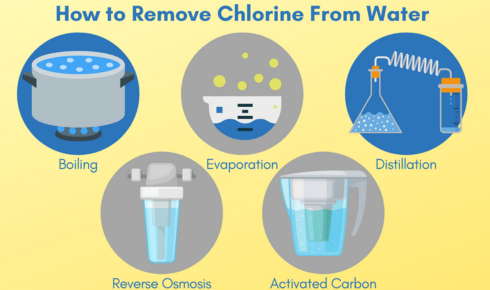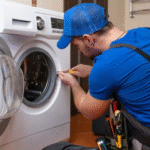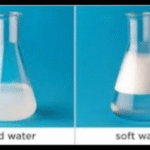There’s a certain comfort in turning on the tap and knowing that the water flowing out won’t make you sick. It’s one of those quiet modern luxuries we rarely stop to appreciate. But if you’ve ever caught a faint smell of a swimming pool while filling your glass, you might’ve wondered what’s really in your water. That sharp scent isn’t just your imagination — it’s chlorine in water, and while it plays a vital role in public health, it’s also something you might not want too much of in your daily routine.
The Story Behind Chlorine in Our Water
Chlorine was first added to public water supplies in the early 1900s, a time when typhoid fever, cholera, and dysentery were rampant. Before disinfection, these waterborne diseases claimed thousands of lives every year. The introduction of chlorination changed everything. It was revolutionary — simple, cheap, and incredibly effective. Cities that adopted it saw their mortality rates plummet almost overnight. In that sense, chlorine became a silent hero, keeping generations safe.
But like many things in life, the story isn’t entirely black and white. The very chemical that saves lives can also cause issues when used excessively or when left unchecked over time.
Why Chlorine Is Still Necessary
Modern water systems are complex. Water travels through miles of pipes before it reaches your sink, often passing through infrastructure that’s decades old. Without a disinfectant, bacteria could easily find their way in. This is where water chlorination comes into play — a protective shield that ensures pathogens don’t multiply while the water is in transit.
The balance, however, is delicate. Too little chlorine, and contamination becomes a risk. Too much, and you start noticing taste, odor, and even potential health effects. That’s why most municipalities maintain chlorine at carefully controlled levels, typically between 0.2 to 2.0 milligrams per liter.
Still, many households today are more aware and cautious about what they consume. We live in an age where people read labels, research ingredients, and invest in water filters. So, naturally, the question arises: should we be drinking chlorinated water every day?
The Double-Edged Sword of Chlorine
Chlorine, for all its disinfecting power, isn’t entirely harmless. When it reacts with organic matter (like small amounts of decaying leaves or other materials in the water), it can form disinfection byproducts — compounds such as trihalomethanes (THMs) and haloacetic acids (HAAs). In high concentrations or over long periods, these byproducts have been linked to health concerns.
Then there’s the more immediate issue: chlorine’s sensory footprint. Many people dislike the taste and smell, describing it as metallic or chemical-like. And in some cases, individuals with sensitive skin or respiratory issues report irritation after long exposure, especially during hot showers.
This doesn’t mean your local water supply is unsafe — far from it. It just means there’s room for personal choice and awareness. We can be grateful for the safety chlorine provides while also exploring ways to minimize our exposure when it’s unnecessary.
The Modern Push for Chlorine Removal
With growing awareness about contaminants, chlorine removal has become a priority for many homeowners. Water filter companies have responded with a wide range of solutions: activated carbon filters, reverse osmosis systems, and whole-house filtration setups. Each method targets chlorine differently — some absorb it, others chemically neutralize it.
Activated carbon filters, for example, are among the most popular. They’re simple, affordable, and effective. When water passes through them, chlorine molecules get trapped in the porous carbon surface, reducing that pool-like taste. Reverse osmosis systems take it a step further by forcing water through semi-permeable membranes, removing not just chlorine but a host of other impurities.
Even shower filters are a thing now, designed to stop chlorine from irritating your skin and hair. People often notice the difference immediately — softer skin, smoother hair, and no chemical odor in the bathroom air.
Taste, Health, and Peace of Mind
There’s a subtle satisfaction in drinking water that tastes like… well, nothing. Clean, crisp, and neutral — that’s how water should be. When chlorine is removed, many people say they start drinking more of it, simply because it’s more pleasant.
Beyond taste, there’s also peace of mind. You might not be able to see or feel what’s in your water, but knowing you’ve taken steps to improve its quality adds a layer of confidence. For families with children, pets, or elderly members, that assurance goes a long way.
Rethinking “Clean” in Everyday Life
We often assume “treated” means “perfectly safe,” but clean water is more nuanced than that. It’s about purity, balance, and personal choice. The same chemical that made water safe a century ago may now be something we aim to minimize for comfort and health.
Of course, it’s not about demonizing chlorine or pushing fear — it’s about understanding. Knowing where it fits in the bigger picture of water safety helps you make better choices for your home. Some people prefer to filter it out entirely. Others are comfortable trusting municipal levels. What matters most is awareness and the ability to decide for yourself.
Closing Thoughts: Finding the Balance
If you think about it, chlorine represents a sort of irony. It’s a chemical that gave us one of the biggest public health victories in history, yet today, it’s something we often want less of.
The truth lies somewhere in between. We need chlorine for safety, but we also need modern solutions that respect our health and senses. The goal isn’t to go backward to unsafe water — it’s to move forward with smarter technology and conscious habits.
So next time you fill your glass, take a moment to appreciate the complex journey of that clear liquid. It’s science, infrastructure, and a touch of chemistry — all working quietly behind the scenes. But with the right awareness, you can make that journey a little cleaner, a little fresher, and perfectly suited for the life you want to live.



